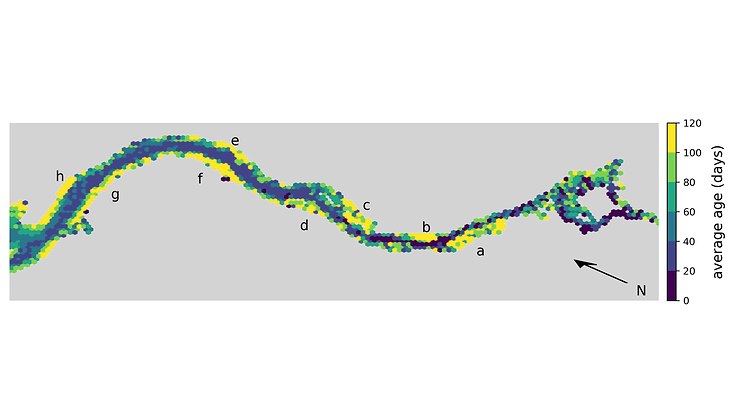Model simulation shows distribution and fate of phytoplankton in the Elbe estuary
14 March 2024, by RTG2530

Photo: UHH/RTG2530/Steidle
Researchers from the Department of Biology at Universität Hamburg and from New Zealand have designed a new model of the Elbe estuary that analyses the movement of phytoplankton. The results contribute to the understanding needed for better ecosystem-based management of estuaries.
Phytoplankton are free-floating, microscopic organisms and plants that cannot move on their own. They are essential for the estuarine ecosystem - i.e. estuaries exposed to the interplay of high and low tides - as they serve as a food source for numerous organisms. "So far, little is known about how phytoplankton can persist in the estuary, as it should actually move with the current and be washed out to sea," says doctoral researcher Laurin Steidle from the Research Training Group 2530 at Universität Hamburg. "If we assume that a population is not maintained by an upstream population, then there must be some kind of retention mechanism that allows the organisms to survive in the estuary." In the past, there have been various theories about how phytoplankton populations can maintain their position in estuaries, including vertical migration in the form of sinking, but so far, little is known about this.
Laurin Steidle and Ross Vennell from the Cawthron Institute in New Zealand have now presented a new model simulation of the Elbe estuary based on individuals, which investigates possible retention mechanisms for phytoplankton. "Our simulations show that upwelling in the water column favours survival and that river banks and marshes are essential for the survival of phytoplankton populations," says Steidle. The reason for this is that phytoplankton organisms with strong buoyancy or the potential to move upwards in the water column are more likely to be transported to shallow areas near the river banks or marshes, which provide refuges from strong currents.
For the study, the researchers applied the Lagrangian model OceanTracker, which was developed by Ross Vennell, to the Elbe estuary. While the Lagrangian model simulated the movement of inanimate particles, the two scientists added the most important biological characteristics of phytoplankton, such as reproduction and mortality, sinking and rising as well as daily vertical migration. By simulating individual organisms in the model, the researchers were able to observe the tracks of the individuals.
"Our results suggest how important the shallow marshes are for estuarine ecosystems," says Steidle. "And they also emphasise the need for ecosystem-based management to prevent the degradation of estuarine ecosystems through dredging and dyking."
Original publication
Steidle L and Vennell R (2024) Phytoplankton Retention Mechanisms in Estuaries: A Case Study of the Elbe Estuary
https://npg.copernicus.org/articles/31/151/2024/

